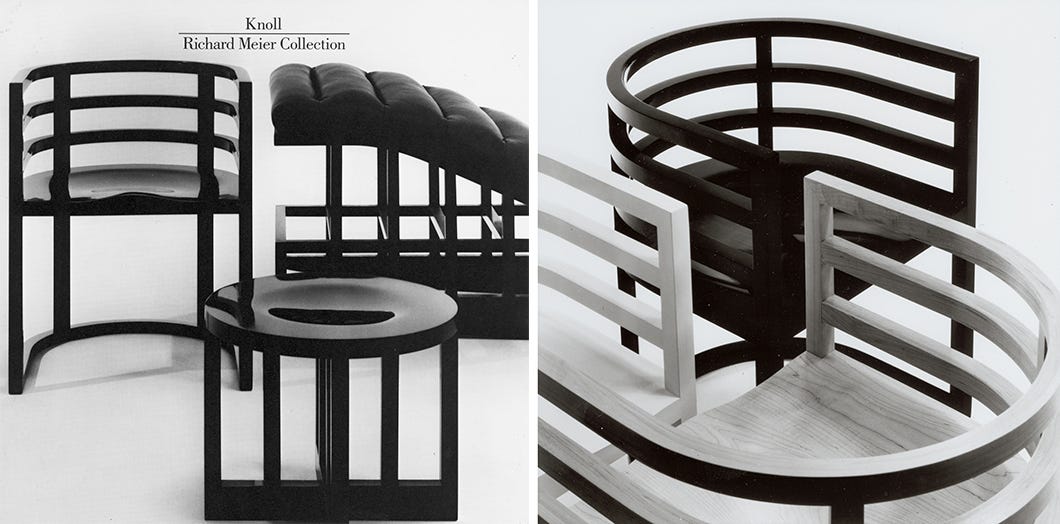Personages, Historical: Richard Meier
Home Furnishings: Conflict and Compromise: Beauty versus Comfort
Money: Changing Value of
Reservations Recommended, Chapter 4:
“There were some chairs I fell in love with. Dining chairs. Armchairs. Designed by Richard Meier. […] So I went to Knoll to sit in one and find out how much they cost. […] They had one in the window. Exactly the chair I wanted. I went right in and sat in it. […] This was the best chair I’d ever seen. It wasn’t all that comfortable. It’s not upholstered. It just has a wooden seat. […] Anyway, a beautiful woman came up to me and said hello. […] ‘I want four. […] How much?’ I asked. […] She flipped through a book. She poked at a calculator. ‘Thirteen hundred dollars,’ she said. […] Then […] she poked the calculator again, and she said, ‘So that would be seventy-two hundred for the four.’”
According to the US Inflation Calculator website, the four chairs that would have cost Matthew $7,200 in 1989 would cost him (or you or me) $17,614.63 in 2023. MD
In the 1970s, the modernist architect Richard Meier designed a chair for the Guggenheim Museum in New York. Meant for the small reading room tucked just off the rotunda of Frank Lloyd Wright’s spectacular design, the chair was itself a curved composition of lines in space, a succinct reduction of Meier’s own architectural work.
Seeing promise in his design, Meier brought the chair to Knoll to see if it could be taken further. The company accepted, and the resulting collection formed, as Vice President of Design Jeffrey Osborne described it, a “whole vocabulary of furniture around the chair.” […]
The architect began to adjust the proportions and dimensions of his original design in order to separate it from its use as a reading chair and allow it to assume “a more universal application.” The result was an undeniably beautiful series of furniture […].
But despite the handsome outcome, Richard Meier’s expressly modern furniture once again succumbed to modernism’s tragic flaw—its ultimate usability. The designs, for all their beauty, were deemed by critics to result in a slightly uncomfortable sit—or, as [architectural critic Paul] Goldberger put it, “not quite what the orthopedist would recommend.”
It seemed that even Meier was aware of the one crucial shortfall in his design. Speaking about his daughter to The New York Times years later, the architect said, “The furniture she’s designed I could never do because it’s very comfortable. My furniture is uncomfortable. I’m more concerned with what it is as an object.”
See also:
Personages, Historical: Busby Berkeley TG 429, W. C. Fields TG 456
Have you missed an episode or two or several?
You can begin reading at the beginning or you can catch up by visiting the archive or consulting the index to the Topical Guide.
You can listen to the episodes on the Personal History podcast. Begin at the beginning or scroll through the episodes to find what you’ve missed.
You can listen to “My Mother Takes a Tumble” and “Do Clams Bite?” complete and uninterrupted as audiobooks through YouTube.
You can ensure that you never miss a future issue by getting a free subscription. (You can help support the work by choosing a paid subscription instead.)
At Apple Books you can download free eBooks of Little Follies and Herb ’n’ Lorna.
You’ll find overviews of the entire work in An Introduction to The Personal History, Adventures, Experiences & Observations of Peter Leroy (a pdf document) and at Encyclopedia.com.



